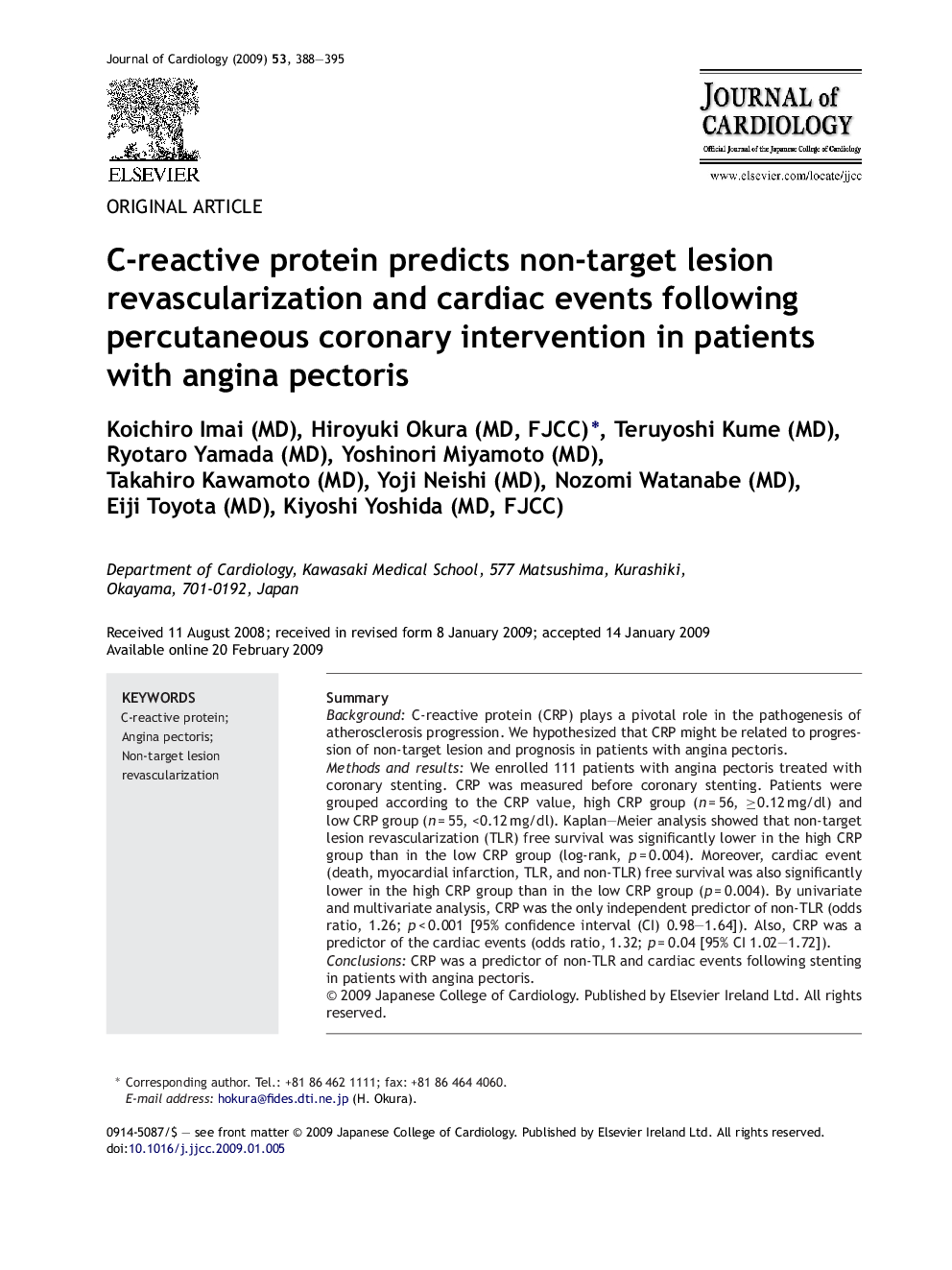| Article ID | Journal | Published Year | Pages | File Type |
|---|---|---|---|---|
| 2963638 | Journal of Cardiology | 2009 | 8 Pages |
SummaryBackgroundC-reactive protein (CRP) plays a pivotal role in the pathogenesis of atherosclerosis progression. We hypothesized that CRP might be related to progression of non-target lesion and prognosis in patients with angina pectoris.Methods and resultsWe enrolled 111 patients with angina pectoris treated with coronary stenting. CRP was measured before coronary stenting. Patients were grouped according to the CRP value, high CRP group (n = 56, ≥0.12 mg/dl) and low CRP group (n = 55, <0.12 mg/dl). Kaplan–Meier analysis showed that non-target lesion revascularization (TLR) free survival was significantly lower in the high CRP group than in the low CRP group (log-rank, p = 0.004). Moreover, cardiac event (death, myocardial infarction, TLR, and non-TLR) free survival was also significantly lower in the high CRP group than in the low CRP group (p = 0.004). By univariate and multivariate analysis, CRP was the only independent predictor of non-TLR (odds ratio, 1.26; p < 0.001 [95% confidence interval (CI) 0.98–1.64]). Also, CRP was a predictor of the cardiac events (odds ratio, 1.32; p = 0.04 [95% CI 1.02–1.72]).ConclusionsCRP was a predictor of non-TLR and cardiac events following stenting in patients with angina pectoris.
